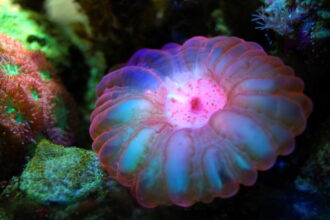Naval Encounters for D&D 5th Edition
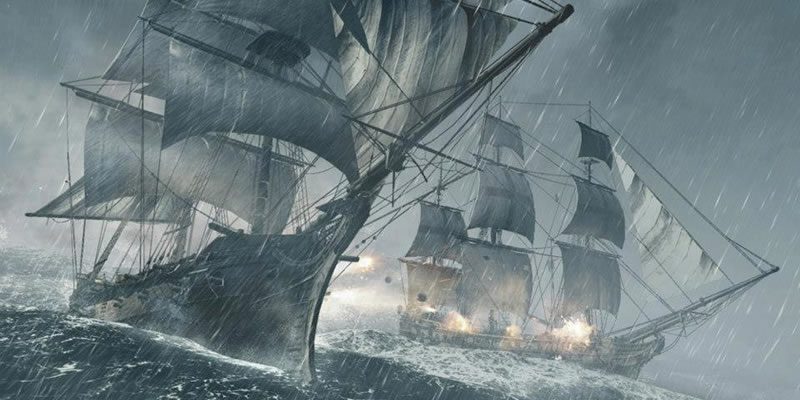
Part 1 | Part 2 | Part 3 | Part 4 | Sea Chases & Complications
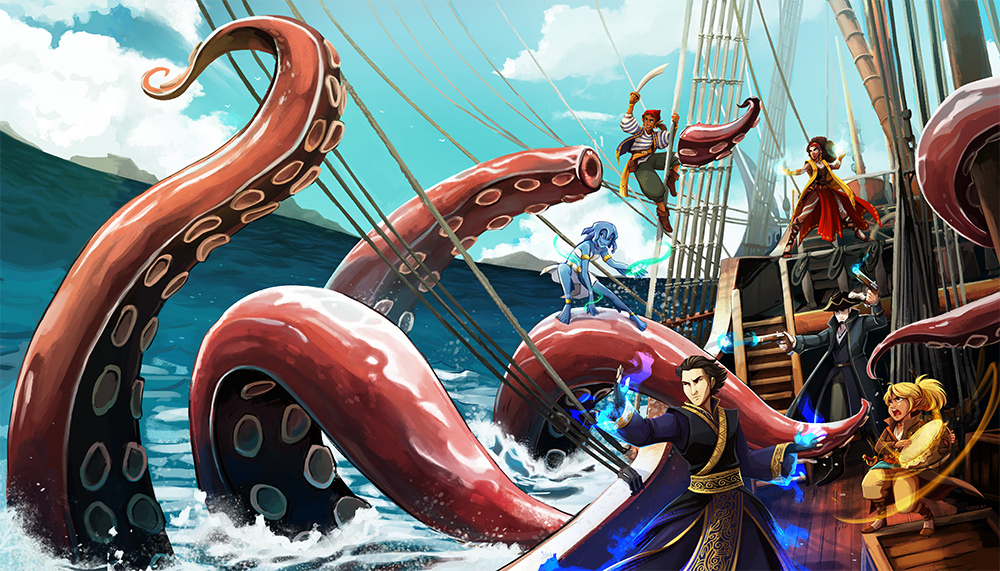
The Seas of Vodari – 5th Edition Swashbuckling & Sorcery
Everything you need to run exciting seafaring campaigns full of swashbuckling action and magical adventure for Fifth Edition.
The Seas of Vodari is a full-color book that we are offering in hardcover and PDF. This book provides 200+ pages of material for gamemasters to run exciting seafaring campaigns for 5th Edition. Your players will get tons of options for creating characters and you’ll get support to run a world full of swashbuckling action and magical adventure.
Get the Seas of Vodari at DriveThruRPG | Pre-Order the Hardcover
Ahoy lubbers! Part 1 of this series covered basic naval combat, Part 2 looked at some more advanced options and Part 3 provided more ideas on how to run a sea battle. Each week, my players and I visit the Seas of Vodari, my homebrew world of islands. In part 4, I wanted to conclude the series with a simplified and streamlined look at how I handle Naval Encounters for D&D 5e after playing a D&D 5e seafaring campaign for almost a year now. My goal for these updated rules is to prioritize player actions and speed up encounters versus simulating realistic naval combat. This article collects and updates much of the content of the previous entries and provides some specific scenarios for naval encounters.
If you are looking for more realistic naval combat, Pathfinder Skull & Shackles and Part 2 of this series are a good place to start.
Not all naval encounters need to end in combat, but sometimes a sea battle is the only resolution. This is my 5 step framework I use whenever my players set sail to run Naval Encounters. It’s really just a list to consult as you set-up and run a naval encounter.
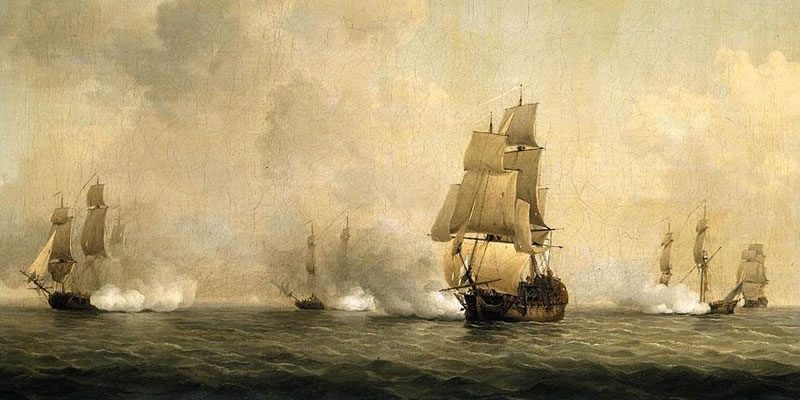
1) Set the Environment
Make sure the players know the current weather, visibility and state of the seas. The players might also have a way to find out what the weather will be for the next 24 hours.
- For random weather there is a good table to roll on in the DMG on page 109 that will give you the current or future temperature, wind and precipitation
- High winds can provide a boost to pilots who can catch it in their sail and a penalty for pilots who try to battle against it.
For the visibility and state of the seas, make a judgement call based on the temperature, wind and precipitation.
- Rolling seas, storms and high winds will increase the difficulty (CR) for pilot checks
- A calm sea and clear sky offers great visibility from the crow’s nest with the ability to spot another ship up to 10 miles away, overcast 5 miles, raining 1 mile and fog 100 to 300 feet.
Don’t forget to describe things like the color, clarity, depth or obstacles. Let them know if they are sailing:
- over a clear, shallow sea full of wrecked ships
- through shallows with jagged rock or coral reefs
- through debris such as seaweed or floating wreckage
- on deep blue water with nothing but the wind at their back
2) What Ships/Monsters are involved?
Sailing across the seas can get boring without some encounters. You can decide on a set encounter or run a random encounter. Check out page 118 of the DMG for the Random Encouters at Sea table.
Once you decide that an encounter will happen ask the following:
- Do the players see one of more ships/giant creatures?
- How far away are the ships or creatures?
- What direction are the ships or creatures heading and at what speed?
- This might be a good time for a knowledge check of some sort. For creatures it is Wisdom (Nature) for ships it is Intelligence (History).
3) Determine Player Intent
Now that the players know the conditions and what is in front of them, ask the players what they want to do.
Assuming they are still far away from each other, here are some choices…
- Scan. Let you players look at the ship with a spyglass or their naked eye. Set DCs and determine how much they learn about the type of ship, flag it is flying or if the ship is damaged. If they attempt this from the crow’s nest or while flying above the ship, make the check easier.
- Chase or Attack. Try to figure out a way to gain on one of more ships for combat or boarding
- Stalk or Skulk. Decide to follow the ship from a distance and maintain that distance. Set a DC for the pilot check based on conditions.
- Approach/Hail. Figure out a way to communicate this with flags or some other form of long range communication
- Hoist a Flag. You can hoist any flag you have in your possession. This can be used to fake-out enemies, appear neutral, surrender or call for a parley. When trying to fake out enemies, the opposing ship should make a check similar to when someone is wearing a disguise.
- Hide/Be Stealthy. Ships that are invisible or have cover can be hard to spot. Clear weather in the open sea would make this impossible, but tough weather or a jagged coastline filled with inlets can make hiding rather easy. Set a DC based on conditions and geography.
- Flee. Running a chase can get long and drawn out, try to figure out a narrative solution based on the relative speed, distance and conditions
- Use Magic. Some spells have long ranges or casters can aid a ship by making it faster or tougher.
4) Determine the Intent of each NPC Ship/Monster
- Determine the actions of the ships and monsters. The player intentions above will work for NPCs too.
- You can predetermine the intent of each NPC or decide after the players make their intentions known.
- If your NPCs have access to spells, don’t forget to use them.
5) Run the Encounter
- Naval encounters can be run without a grid, but having some kind of markers on your tabletop to show the distance and facing of ships is a good idea, even if it just scratches on a piece of paper.
- Once intentions for the players and NPC are set, it is time to run the encounter. The encounter might involve skulking or chasing, so keeping track of range is important.
- It’s also important to think of the encounter as something evolving and to ask your players and your NPCs what their intention is as things progress.
Range
The distance between parties in an encounter can make an encounter long and drawn out. Try to fast forward by checking for actions at each range. Ask the following…
- How far away can the players or NPCs fire at an enemy with weapons or magic?
- It is up to you to decide how many weapons could actually be aimed at a boat, if it is in range due to the facing of each vessel.
- Try to break up the time is takes to close in on each other to the following ranges:
- More than 2,400′: Outside of attack range.
- 2,400′ – 1,200′: Far range of full size cannons (disadvantage)
- 1,200′ – 600′: Medium range of full size cannons (disadvantage) and far range of some siege weapons.
- 600′ – 250′: Cannons will fire with accuracy and swivel cannons fire with disadvantage. Most siege weapons start to be in range. Some range weapon such as long bows will start to be in long range.
- 250′ and closer: Cannons, swivel cannons, siege weapons, range magic and range weapons are all in range and combine to make any encounter at this distance deadly in a very short period of time.
- If a chase is happening figure out how many round it will take to close and fast forward to the stuff where things happen. Convert rounds to minutes or travel simply by taking any distances and multiplying by 10 or even use a Narrative Challenge to outline how the crew chases their prey through dangerous waters full of jagged rocks.
Position of the Ships (Facing)
This is just like positioning tokens for monsters and PCs, only now the tokens are rectangles and facing does matter.
- It might be a good idea to sketch out ship placements and facings for you players, if you are not using grid combat.
- You might wait to do this until the ships are close to each other. If you have a big enough table or screen, place them at long range.
- All the specifics of positioning boats can be a bore or over the top for some players, while others love the tactics involved. Determine what your group likes and allow your pilot to carefully turn and run the ship or include this as part of a sailing check and let your pilot just tell you the tactics he wants to use.
Initiative
If any parties are in attack range, aware of each other and hostile then roll initiative.
- Ships have no initiative bonus, so just roll a d20.
- As an optional rule, you can add the Captain or pilot’s initiative bonus to the roll.
- If one ship clearly should go first due to an advantage, skip the roll and place that ship first in the order.
Officer Actions
On the ship’s initiative all players can use their turn to complete an officer action, but players should be free to run these outside of combat range too. It’s a good idea to have every PC on a ship have their own job such as captain, first mate, pilot, navigator, cartographer and surgeon. Check out Officer Roles on a Pirate Ship for more ideas.
CAPTAIN/FIRST MATE/MASTER GUNNER
- Rally. Allow player to intimidate/inspire the crew once per battle for an advantage on a roll. Make a Charisma check with a DC of 10 (or higher if crew is disloyal or in real trouble).
- Weak Spot. Allow player to look for a weakness in the defenses of the enemy’s vessel. Make an Intelligence check with a DC of 15 (adjust for conditions) to spot a weakness and give advantage on the next attack roll that targets that weakness
- Order Broadside. All of the guns on one side of the ship fire at the same time (foregoing their normal turns). Allow them to make one attack roll for all cannons with advantage. On a miss, have the attack do half damage.
- Boarding. Order the ship to be brought up against/alongside an enemy ship with the goal of capturing or destroying it.
- The easiest way to think about boarding is to treat it like a grapple attack with advantage.
- A ship is drifting/holed at 0 HP and is considered disabled.
- To board an enemy vessel the pilot must first approach the enemy ship. Have the pilot make a DC 10 pilot check. If the boat is disabled, this can be lower. If the other ship is under full control and evading the attacking ship, make the DC higher.
- You can have the players use their own actions to aid in the boarding attack by using grappling hooks, employing boarding nets, swinging over on ropes or dropping a bridge.
- Come up with a DC based on conditions and have the captain roll (grapple check by pilot)
- A ship can attempt to free itself with an opposed pilot check rolled with disadvantage. Set the DC based on conditions.
- Once boarding has occurred, normal melee rules apply.
- Ramming. Make an order to simply hit your ship into an enemy ship (or creature).
- You must be at least 30′ away from the other boat and end your turn reaching the other ship.
- Attack: 1d20 + proficiency + dexterity (or 1d20+6 for simplicity) versus the AC of the other ship or versus a pilot check (your choice). If a ship has limited mobility you should provide advantage or make this a simply pilot check.
- Damage: Speed of Boat (in feet per round) x 1d4 bludgeoning damage, the ramming ship takes half of the damage to itself
- Example: 30′ x 1d4 (rolled 3) = 30 x 3 = 90 hp bludgeoning damage to enemy ship, 45 hp bludgeoning damage to attacking ship
- If the attacking ship has a battering ram you might want to let them roll a d6 and take less damage.
PILOT
- Your group might want to have the player who is playing the pilot to know a little bit about sailing.
- Have the pilot make a Dexterity check to make sure they are controlling the ship well, failure can result in the ship slowing, not turning, giving advantage to their opponent or even losing facing preventing the firing of guns.
- The helm must be controlled by a player or NPC or the ship will be drifting.
- For pilot checks you can add the pilot’s DEX modifier and proficiency to the roll, if they are a skilled pilot.
- Proficiency with vehicles (water) is part of the Sailor background or something you can add with a feat or custom background.
- As an optional rule you can add the pilot’s DEX modifier to the AC of the ship if they are a skilled pilot.
CARTOGRAPHER/NAVIGATOR
- At any time the careful plotting, map reading and skills of a navigator or cartographer can be called upon to help your ship hide, avoid danger or travel faster.
- Proficiency with navigator’s tools is part of the Sailor background or something you can add with a feat or custom background.
- Remind your players who have these jobs of ways they can help the ship to achieve its current intention.
- Set DCs based on both the task and the current conditions it is to be performed under.
CANNONEERS
- Ship Cannon (modified to be weaker than Cannon found in DMG)
AC: 19 | HP: 60 | Damage Immunities: poison, psychic
Ranged Weapon Attack: +6 to hit, range 500 feet/2000 feet, one target. Hit 33 (6d10) - Swivel Gun
AC: 17 | HP: 35 | Damage Immunities: poison, psychic
Ranged Weapon Attack: +6 to hit, range 250 feet/500 feet, one target. Hit 17 (4d8) - at long range, have your players aim the big guns. Two to three crew are required to operate a full size cannon.
- at close range, have your players without ranged attacks man the swivel cannons and let them roll the attacks and damage. Only one to two crew are required to operate a light cannon.
- Have an officer be the master gunner and allow them to add their Dexterity and Proficiency to all attacks or take the built in +6, whichever is higher.
- If no officer is in charge of the guns, then a cannon should fire with disadvantage.
- You can also offer ammunition other than iron balls to put into the cannons. Here are just some of the options, but get creative and add your own or create smaller swivel cannons.
- Chain Shot. Two iron balls joined together with a chain used to destroy rigging, boarding netting and sails.
- Explosive Shell. A grenade like projectile that explode and send shrapnel everywhere. This type of shot was not used until around the mid 19th century and is even referenced in the American national anthem (“bombs bursting in air”).
- Grape Shot. Basically small metal balls or shrapnel wrapped in canvas which broke open when fired and scattered with deadly effect. Grape shot was best used to kill crew below decks, officers or enemy boarding parties.
- Canister Shot. Used against personnel and similar to grape shot, cans were filled with musket balls. When fired, the cans broke open firing like a giant shotgun.
SPELLCASTERS
- Spellcasters can cast spells to teleport, make things invisible, attack, put out fires, etc.
- I like rewarding creative use of magic.
- Repairs to the ship can be made when the vessel is berthed (see page 119 in DMG) or if a player uses powerful magic spells such as fabricate (the mending cantip can not fix a boat). Don’t be afraid to let a player get creative with a spell slot (I allow mend to be used to fix the boat for single digit HPs).
- Some longer ranged spells worth taking a look at are Ice Storm, Otiluke’s Freezing Sphere, Project Image, Dimension Door, Arcane Gate and Control Weather.
SURGEONS
- A ship’s surgeon must have some kind of clerical/healing skill.
- The surgeon can restore 1 crew member per turn, DC 10 with any related modifiers added on

Sample Encounters
Here are two scenarios that aren’t like the simple naval combat I outlined in Part 2 of this series.
Scenario 1: Privateers at Work
Let’s set-up an encounter where our heroes are part of a crew of privateers (or pirates if you like) chasing down a merchant ship flying the flag of a rival kingdom. As they close in on the smaller vessel, another warship appears on the horizon.
- Environment: Light rain, strong wind blowing south (+15′) and rolling seas. Let’s start with piloting in these condition at DC 15 and visibility is 1 mile.
- NPC Intention: The small merchant ship will flee and try to get away. If caught and combat begins, the merchant ship will surrender after one round. The rival warship will engage the privateer warship since they fly the same flag as the merchants.
- Player Intention: The players decide to chase and attack the merchant ship. Once the large galleon appears and its flag is known, the players might change their intentions and decide to flee or hide. They might also quickly take the surrendered ship and try to attack with 2 ships, flee with two ships or even hole the merchant ship, forcing the rival warship to go into rescue mode.
- Range: The merchant ship is 600 feet from the privateer warship that was hiding and now at full sail. Both are traveling west, with the privateer gaining on the merchant ship at a rate of 150 feet a minute. The rival warship is set to appear 1 mile away after the players get within combat range of the merchant ship.
- Speed: Players 45′ per round. Merchant 30 feet per round. Warship 45 feet round.
- Initiative: The players have initiative since they are chasing the merchant ship.
How I’d run this encounter: You can worry about facing and distance (see Part 2) or you can just let your players know when they are close enough for magic or cannons. Realistic naval combat can be lots of fun, but my players just want to know if they can fire their arrow, cannon or spell. They also really want to do things like set the other boat’s sails on fire. You might want to set HP for the ship’s hull and sails individually. Once the two ships get really close, having them ram or crash and board. When the warship arrives it might not be spotted right away, I’d check based on the passive perception of the crew member in the crow’s nest, with a fail allowed the warship to get closer undetected. Once two ships are connected, you basically move into normal combat.
Scenario 2: Kraken Attack
I ran this encounter a couple of weeks ago. The players are traveling in their sailing ship when they see a lightning strike about 100 feet in front of their ship. A kraken hatching emerges off their 50′ bow. Another lightning strike and a kraken hatching emerges 50′ off their stern.
- Environment: Sunny skies with strong wind blowing north (+10′) over clear, shallow seas with many shipwrecks underneath. Let’s start with piloting in these condition at DC 10 (to avoid some jagged rocks) and visibility is 5 miles.
- NPC Intention: Two kraken hatchlings are learning to hunt. The krakens are hostile and want to sink the ship and/or eat the crew. Their adult kraken mother is unconcerned and watching hidden below.
- Player Intention: The players decide they will fight and continue to sail north and try to escape the territory of the kraken.
- Range: Everyone is within ranged combat at the start of the encounter of 50′ or less. The krakens travel with the boat until they disengage or are defeated.
- Speed: Kraken A is traveling south 50′. Kraken B is traveling north 50′. The ship is traveling north 40′ per round (30′ + 10′ wind).
- Initiative: Roll initiative since the lightning bolt should have put the crew on alert.
How I ran this encounter: My level 10 players made easy work of the hatchlings and their mother as they had the help of the crew manning the 3 cannons and 2 swivel guns. Their ship continued to sail north and the krakens left them alone once they escaped the territory (which I set to be 10 rounds or 400′ or until the krakens were hurt enough to withdraw). Even an adult dragon or kraken can be easy work for a ship with cannons and a surgeon.
Let me know what you think of these rules in the comments below or visit the related the forum topic I posted and have your say.
Check Out Our Naval Combat Guide
Batten Down the Hatches!
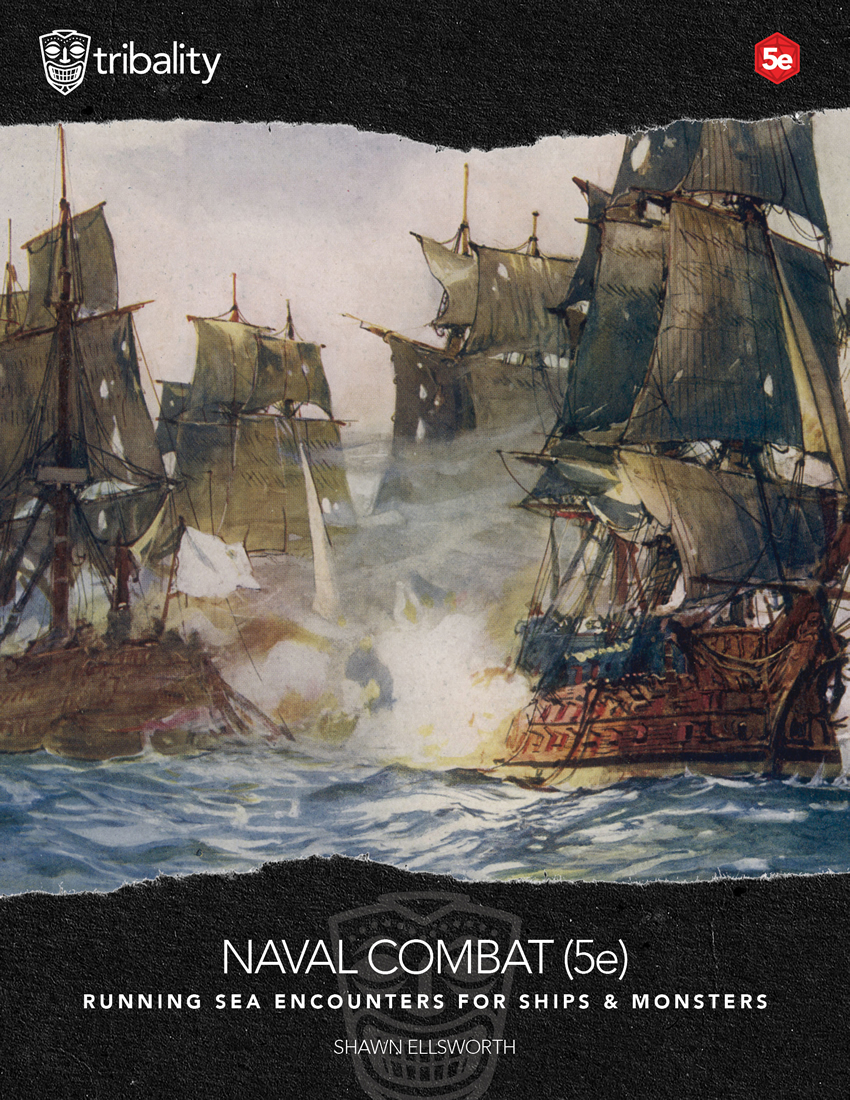 Are you looking to run exciting, fast paced naval encounters where all your players have something to do each turn? Do you want to run cinematic sea battles between ships and terrify your players with sea monster attacks?
Are you looking to run exciting, fast paced naval encounters where all your players have something to do each turn? Do you want to run cinematic sea battles between ships and terrify your players with sea monster attacks?
I wrote this guide after running a weekly seafaring campaign for Fifth Edition for over a year. NAVAL ENCOUNTERS provides GMs with rules, ideas and examples for running combat and other scenarios at sea for your Fifth Edition game. Whether you are looking for rules to run an encounter between ships, naval combat roles to give to each of your players, or ideas on how to handle a sea monster attack, this guide is the answer.
Product Information
This guide provides GMs with rules and ideas to run exciting, fast paced naval combat encounters. In this guide you will find:
- Rules for running lightweight naval encounters
- Example combat encounters
- Shipboard roles for your Captain, Master Gunner, Ship’s Surgeon and other officers
- Stats for guns, cannons and ships
These materials were designed to be used with Fifth Edition rules.


